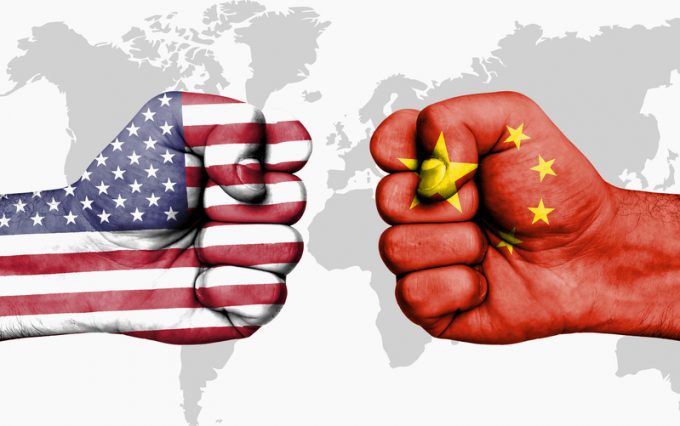Tech Trouble: How Tariffs on Imports Are Hitting Innovation
Tech Trouble: How Tariffs on Imports Are Hitting Innovation Innovation has long been the sine qua non of economic dynamism. From the incandescent bulb to the latest quantum processor, breakthroughs arise when inventors and firms collaborate seamlessly. Yet a growing impediment looms on the horizon: tariffs on technology imports. These levies, designed to protect domestic industries, can inadvertently stifle creativity, fragment supply chains, and inflate costs.
In this comprehensive exploration, we delve into how duties on semiconductors, lab equipment, and other cutting-edge components are reshaping the innovation landscape. Anecdotes, data, and expert insights coalesce to reveal both immediate disruptions and latent hazards.

The Rationale Behind Tariffs
Economic Protection or Pyrrhic Victory?
Tariffs serve as fiscal barriers, raising the cost of foreign goods to nurture local production. In theory, sheltered industries can expand without facing ruinous international competition. Yet, when applied to high-tech components, these measures may generate a Pyrrhic victory.
Short sentence.
Innovative ecosystems thrive on specialization and comparative advantage. By imposing tariffs on technology imports, governments risk creating artificial silos, where domestic firms lack access to best-in-class inputs.
Strategic Imperatives
In some contexts, tariffs on critical technologies aim to safeguard national security. Controls on semiconductors, encryption hardware, and biotech apparatus reduce the risk of sensitive know-how transfer. Although security is paramount, broad-brush duties can ensnare civilian innovators alongside defense contractors.
Long sentence: the labyrinthine network of R&D collaborations and global supply chains means that measures intended to prevent espionage may instead hamper a university lab’s procurement of precision instrumentation.
Anatomy of Innovation Supply Chains
Interconnected Networks
Modern devices rely on components sourced from multiple jurisdictions. A single smartphone may incorporate chips fabricated in Taiwan, sensors assembled in Germany, and software developed in California. This intricate choreography of design, fabrication, and testing exemplifies globalization’s potency.
Tariffs on technology imports disrupt this choreography by making each cross-border transaction more expensive and administratively burdensome.
Just-in-Time vs. Tariff-Induced Hoarding
The just-in-time (JIT) paradigm minimizes inventory costs by synchronizing deliveries with production schedules. JIT underpins lean manufacturing and rapid iteration in sectors like consumer electronics and robotics.
However, when facing unpredictable duties, firms may abandon JIT in favor of tariff-induced hoarding—stockpiling components to hedge against future price hikes. This strategy elevates working capital, strains smaller enterprises, and blunts the agile responsiveness crucial for innovation.
Direct Costs of Tariffs
Price Inflation
Duties on imported microprocessors, specialized lasers, and cleanroom equipment directly inflate purchase prices. A 20% tariff may transform a $50,000 piece of wafer-inspection machinery into a $60,000 outlay. Such increments can sway funding decisions and delay prototypes.
Short sentence.
R&D Budget Squeeze
Research budgets are finite. When capital is diverted to cover elevated procurement costs, less remains for personnel, consumables, and exploratory projects. Early-stage startups, dependent on seed funding, often feel the pinch most acutely. Their runway shortens, and pivotal proof-of-concept milestones may slip.
Longer sentence illustrating the cascade: when a pioneering lab must allocate extra funds to import a high-precision spectrometer due to tariffs on technology imports, subsequent experiments to validate novel materials might be postponed, undermining grant applications and investor confidence.
Indirect Consequences
Innovation Flight
Firms may relocate R&D facilities to jurisdictions with fewer trade barriers. Singapore, Ireland, and certain U.S. states offering tax incentives have seen an influx of laboratory relocations. While such migrations preserve innovation, they erode the domestic knowledge base and workforce development.
Fragmentation of Standards
When regions diverge on technology policies, standards can fragment. Imagine two variants of a robotic interface: one incorporating tariff-free European sensors, another using costlier domestic substitutes. Interoperability suffers. Developers confront a labyrinth of compatibility concerns, slowing product launches.
Supply-Chain Resilience vs. Complexity
Policymakers champion supply-chain resilience to shield against geopolitical shocks. Yet excessive reliance on protective tariffs can paradoxically reduce resilience. Firms diversify suppliers to circumvent duties, multiplying logistical complexity. Greater complexity can magnify disruptions when a single link fails.
Case Studies
Semiconductor Equipment
The semiconductor industry represents a bellwether for advanced manufacturing. Recent levies on lithography machines and etching apparatus have compelled chipmakers to reconsider expansion plans. One major fab announced a six-month delay in a $5 billion investment, citing unexpected tariff-related cost overruns.
Short sentence.
Biotech Instrumentation
Academic laboratories rely on flow cytometers, PCR machines, and mass spectrometers—machineries often sourced from a handful of global firms. Tariffs on technology imports introduced during trade disputes have led to a 15% uptick in instrument costs over two years. Result: some universities postponed critical cell-therapy research, potentially delaying cures by months or years.
Renewable Energy R&D
Solar panel developers utilize specialized deposition chambers and characterization tools imported from East Asia. Introduction of tariffs on such equipment raised project costs by over $200 million in aggregate for a consortium of startups. Weathering this, firms redirected funds toward lobbying efforts rather than into engineering breakthroughs.
The Human Dimension
Talent Retention and Morale
Engineers and scientists, often motivated by access to cutting-edge tools, may become demoralized when projects stall due to funding gaps. In worst-case scenarios, top talent seeks opportunities abroad, further depleting the domestic innovation ecosystem.
Educational Impacts
University programs in robotics, nanotechnology, and advanced materials have experienced equipment backlogs. Graduate students face extended timelines to complete theses; some pivot to theoretical work due to lack of empirical facilities.
Policy Trade-Offs
Balancing Protectionism and Openness
Effective policy must balance national interests with openness to global knowledge flows. Blanket tariffs risk undermining the very innovation that drives long-term competitiveness. Selective tariffs—targeting only critical dual-use items—can offer a more nuanced approach.
Short sentence.
Coordinated International Frameworks
Multilateral agreements, such as those under the World Trade Organization, can harmonize approaches to emerging technologies. Crafting carve-outs for R&D materials and prototype imports would preserve innovation incentives while maintaining safeguards against security risks.
Temporary Exemptions for R&D
Several countries have implemented temporary duty suspensions on research equipment. These exemptions allow labs to import novel tooling without incurring full levies, subject to strictly defined use cases and re-export obligations. Expanding and simplifying exemption protocols can alleviate burdens.
Industry Responses
Vertical Integration
Firms may pursue vertical integration, internalizing component production to circumvent external tariffs. While this can reduce exposure, it requires vast capital investments and carries its own inefficiencies, potentially stifling competition.
Cross-Border Joint Ventures
Collaborative ventures between domestic and foreign firms offer a compromise. Local partners handle assembly or customization, while proprietary R&D remains abroad. Such arrangements dilute tariff impacts but introduce complexities in intellectual property management.
Advocacy and Coalition Building
Industry consortia and academic coalitions have lobbied for reduced duties on specific classes of equipment. By presenting cogent economic analyses—demonstrating how tariffs on technology imports erode GDP growth and global competitiveness—they seek policy recalibration.
Economic Modeling of Innovation Impacts
Dynamic Growth Models
Economic researchers employ endogenous growth models to simulate how innovation responds to input costs. Findings suggest that a sustained 10% rise in machinery costs can reduce patent filings by 5% over a five-year horizon, with pronounced effects in emerging tech domains like AI and quantum computing.
Long sentence with nuance: such modeling underscores the non-linear relationship between capital cost increases and innovative output, particularly when small startups face steep barriers to entry relative to incumbent industry giants.
Spillover Effects
Innovative activities generate spillovers—knowledge transfers that benefit adjacent sectors. When tariffs on technology imports dampen R&D in one domain, positive externalities in others can wane. For example, breakthroughs in nanofabrication often inform advances in biomedical devices; stifling one area reverberates across the entire innovation ecosystem.
Future Outlook
Emerging Technologies at Risk
Quantum technologies, photonics, and advanced materials stand at an inflection point. Labs pursuing quantum processors rely on cryogenic measurement tools typically imported from specialized manufacturers abroad. Tariff disruptions threaten timelines for achieving quantum advantage.
Geopolitical Realignments
As trade policy becomes intertwined with great-power competition, nations may form technological blocs. The U.S., EU, Japan, and allies could create a preferential innovation zone with reduced tariffs on technology imports among participants, catalyzing intra-bloc collaboration while excluding others.
Short sentence.
Digital Trade Agreements
Beyond tangible goods, digital trade pacts can facilitate cross-border data flows, remote calibration of equipment, and virtual collaboration. Embedding R&D provisions in such agreements can indirectly mitigate the effects of equipment tariffs by allowing service-based innovation partnerships.
Recommendations for Policymakers
- Implement Targeted Tariff Carve-Outs
- Exempt R&D equipment and prototype imports from levies.
- Define clear eligibility criteria and streamline application processes.
- Enhance Temporary Import Relief
- Expand duty suspension programs with minimal administrative hurdles.
- Incorporate longer exemption durations for multi-year projects.
- Foster International R&D Coalitions
- Negotiate multilateral agreements safeguarding research-critical supply chains.
- Create joint funding mechanisms for cross-border innovation clusters.
- Monitor and Evaluate Impacts
- Commission periodic economic assessments quantifying how tariffs on technology imports affect patent output, startup formation, and productivity growth.
- Adjust policies dynamically based on empirical evidence.
- Support Domestic Manufacturing Where Strategic
- Invest in local capabilities for security-sensitive components.
- Pair subsidies with performance metrics to encourage cost-effective scaling.
Recommendations for Industry
- Proactive Supply-Chain Mapping
- Identify critical components at risk of tariff exposure.
- Develop alternative sourcing strategies and maintain buffer stocks judiciously.
- Invest in In-Country Fabrication
- Evaluate the long-term costs and benefits of onshore production.
- Leverage public–private partnerships to defray capital expenditures.
- Forge Collaborative Consortia
- Join industry coalitions to amplify advocacy efforts.
- Establish pre-competitive research platforms to pool resources and share risk.
- Embrace Agile R&D Methodologies
- Accelerate design cycles to reduce inventory holdings of imported components.
- Utilize modular architectures that permit substitution of tariff-exempt subassemblies.
Conclusion
Protecting nascent industries can sometimes pose unintended obstacles to technological progress. As this analysis has shown, tariffs on technology imports exert both overt and subtle dampening effects on innovation ecosystems. From price inflation to supply-chain fragmentation, the challenges are multifaceted.
Yet the path forward need not be bleak. Through judicious policy design—targeted exemptions, international coalitions, and dynamic evaluation—governments can uphold national interests without sacrificing innovation vitality. Likewise, industry can adapt by mapping risks, exploring vertical integration judiciously, and mobilizing collective advocacy.
Innovation remains humanity’s engine for solving pressing challenges, from climate change to healthcare. Ensuring that tariffs bolster rather than blunt this engine is essential. The time to act is now: recalibrate duties, reinforce global collaboration, and keep the sparks of ingenuity alight.



